 |
SRGC Bulb Log Diary |
| Home Recommend This Site To A Friend |
|
BULB LOG 8 19-02-04 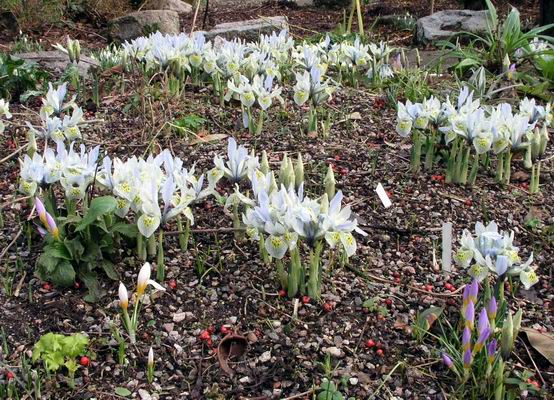 Bulb bed, Iris 'K.H.' In the garden the bulbs continue to push through at a pace and in one of the gravel bulb beds it is Iris 'Kathrine Hodgkin' that is the star of the moment. I never cease to be amazed at just how tough this delicate looking dwarf iris is - it survives snow and frost without a mark. 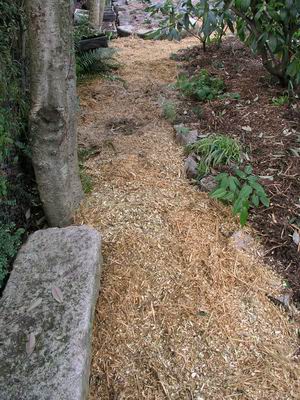 Woodland path One of the jobs that we had to get done was to prune the Cotoneaster trees now that the birds have had all the berries. The woody prunings are all shredded or chipped and the produce spread on what we grandly call the 'woodland walk' - the bouncy feel under foot is a nice contrast to walking on stone slabs or gravel and this brings another sensation that should be part of the design in every garden.  Eranthis x2 Of all the bulbs in the garden none are more cheery than the Eranthis with their shiny yellow faces staring up at you. On the left is Eranthis hyemalis and on the right Eranthis 'Guinea Gold' with its bronzer foliage and deeper yellow flowers.  Eranthis pinnatifida Eranthis pinnatifida is a less well-known member of this genera and we are slowly building it up in a pot in the corner of the bulb frame. 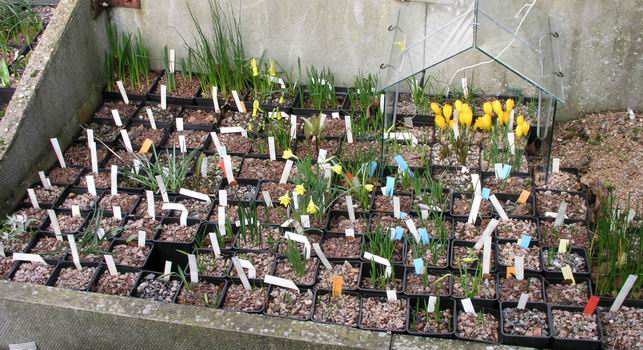 Bulb frame You may just be able to make it out at the bottom left of this frame - it is the Narcissus asturiensis, cyclamineus and Crocus cvijicii that provide the rest of the colour for the moment. 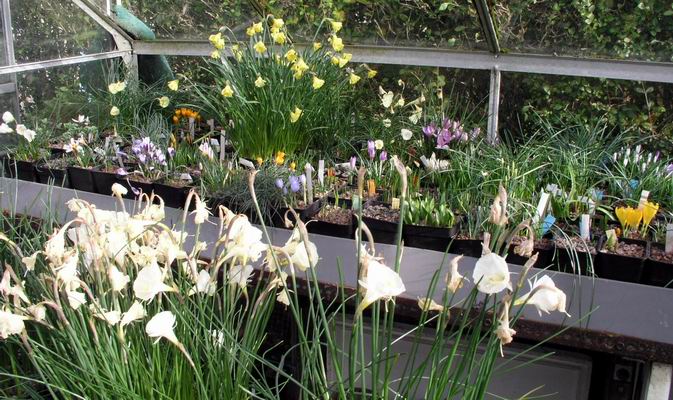 Bulb house 16.02,04 It is surprising just how much growth there is in the bulb house and again it is the Crocus and the Narcissus that dominate this scene. I want to have a look at a few Narcissus this week, because, as I check back to last year's log, I seemed to miss out on sharing quite a lot of them with you. Now the first thing anyone learns when reading up about these 'hoop petticoat' Narcissus is just how many names are applied to what appears to be the same species. I will stick with the names that I got them under while the taxonomists battle it out.  Narcissus albidus ssp occidentalis This flower has crystal clear white flowers and the petal has a distinct twist to it - it also has a delightful sweet scent. 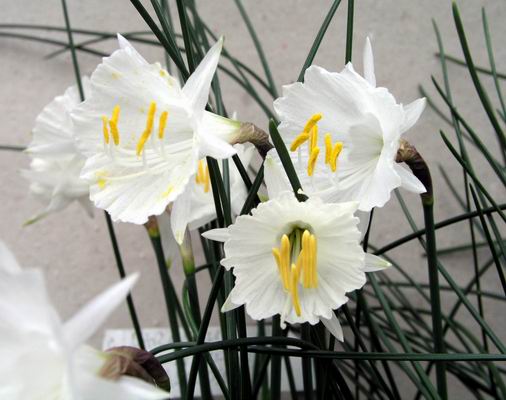 Narcissus bulbicodium ssp. eualbidus Although smaller, Narcissus bulbicodium ssp. eualbidus is superficially similar to the previous one but you will notice how the stamens are exerted well beyond the corona - this is one of my favourites. Some years these flowers point straight upwards and I think it is the same as the plant that some call N. rifanus. ( I think that this is also the plant that Sandy Leven placed on the forum without a name.) 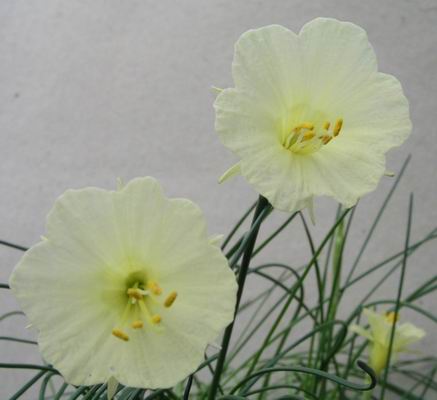 Narcissus 'Joy Bishop' A named form of N. romieuxii, Narcissus 'Joy Bishop' can be distinguished by the lobed edge to the corona. There used to be a lot of this plant around (it was mistakenly circulated in Scotland as 'Julia Jane' for a number of years) but now I do not see so much of it. I often worry that when a plant is so available and common we lose interest in it and all of a sudden, before we know it, we are in danger of losing it - there is a warning here.  Narcissus 'Craigton Gem' Another selected form of N. romieuxii is 'Craigton Gem' . We selected this one for its short stem and it's willingness to flower freely every year. We registered the name with the RHS last year along with the next one. 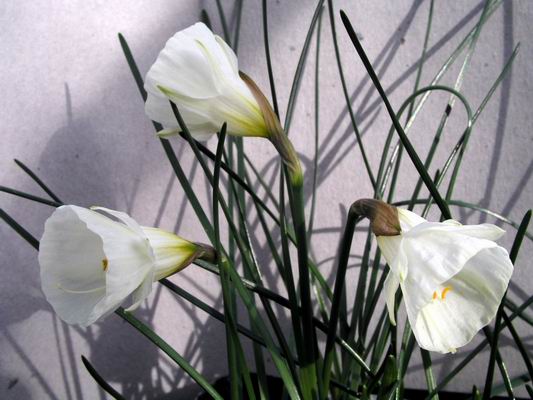 Narcissus 'Don Stead' This, as the name suggests, was raised by Don Stead and is a cross between cantabricus and bulbicodium - it also has a very short stem and a very distinctive flower shape.  Aphids A word of warning to be ever alert for the dreaded aphids. Even though I spray with a systemic insecticide on a regular basis there are new shoots emerging daily and these have not yet had the benefit of a protective dose of spray.  Colchicum luteum x kesselringii I will leave you with what may be a success story, although I have not convinced myself yet. In 1997 I crossed Colchicum luteum with C. kesselringii and this is the very first flower - my question is, do I have a cross? The flower certainly has the purple stripe of C. kesselringii but I have not seen enough forms yet to know if this could also be a characteristic of Colchicum luteum - your opinions to the forum please. ^ back to the top ^ |